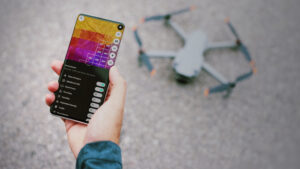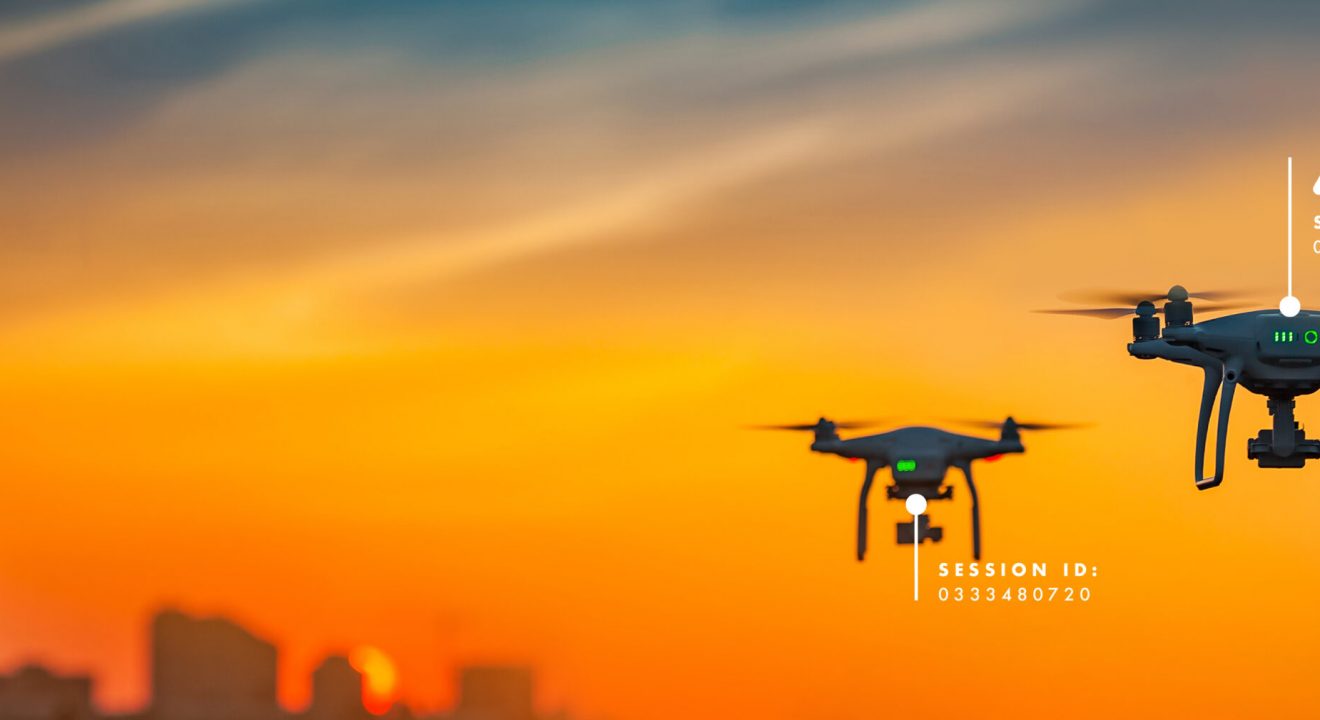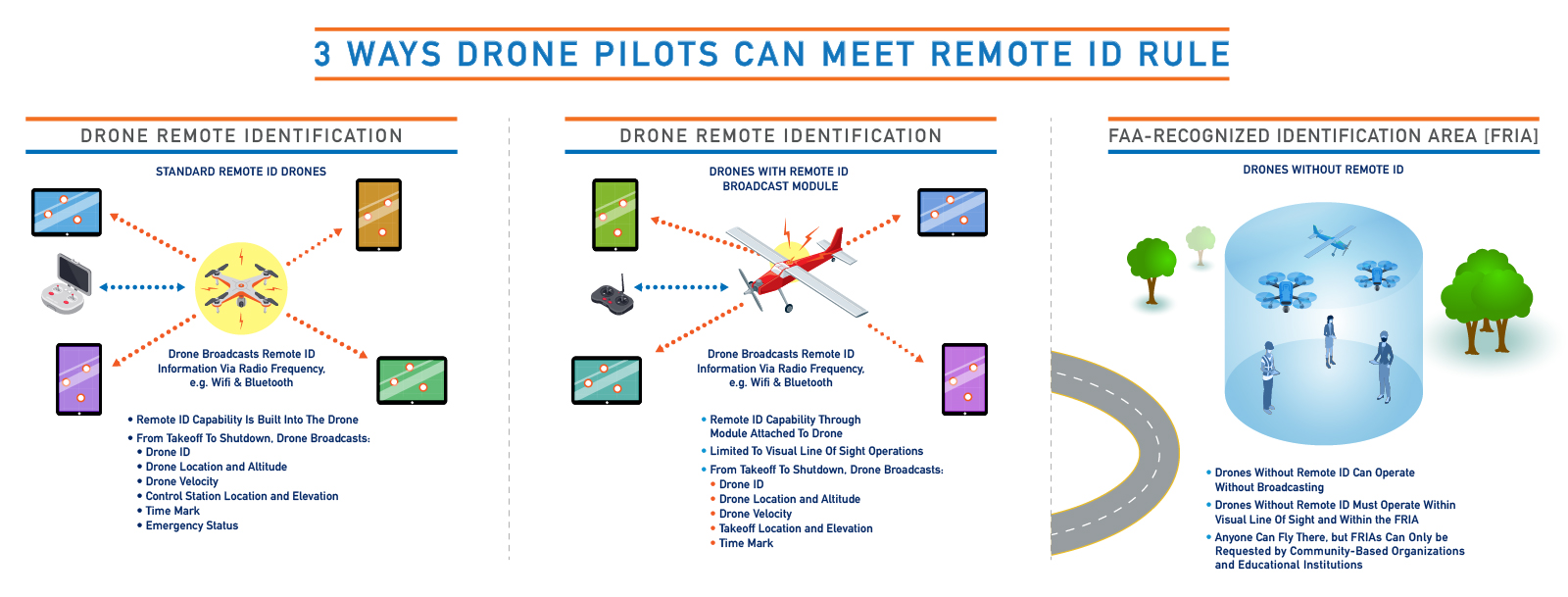Today, more than 1.7 million drones and 203,000 remote pilots are registered with the FAA, and these numbers are growing every day. However, the lack of a drone identification system has been a long-standing barrier to the scalability of unmanned aircraft. That barrier will soon be broken down. The FAA recently unveiled their final remote ID rule that will require drones to broadcast their location in the United States.
We’ll break down the basics of remote ID and what the new rule means for drone operators.
What is remote ID?
Remote ID technology, also known as a digital license plate, helps identify unmanned aircraft operating in the airspace. The FAA aims to create a comprehensive remote ID system where every drone in-flight broadcasts a unique identifier. This would allow authorities to identify any drone in the airspace and connect it with a registered pilot, much like an automobile license plate identifies a vehicle and the vehicle’s owner.
Why is remote ID important for drones?
First, remote ID technology can help aviation authorities provide situational awareness to other aircraft and identify unauthorized drones that may pose a security threat. Remote identification can also help law enforcement hold drone operators accountable if they violate any nuisance or privacy laws.
Secondly, remote ID efforts will help lay the foundation for more complex drone operations, such as flying over people, vehicles, or at night. Without a waiver, these operations were previously prohibited under the FAA’s Part 107 regulations. Remote identification is the first step to enable these advanced operations without requiring a waiver.
Finally, a comprehensive remote ID system can help increase public trust in drone operations by providing assurances that the drones operating nearby are legal and safe.
What is the FAA’s final remote ID rule?
Under the final rule, all drones required to register with the FAA must enable remote identification. This would apply to all drones in the United States unless the drone weighs 0.55 pounds or less and is flown exclusively under the rules for recreational flyers. Drone operators can also choose to fly in a FAA-Recognized Identification Area where drones without remote ID are allowed to fly.
Otherwise, the rule requires the following data to be broadcasted: the drone’s serial number or an anonymous session ID; the drone’s position, altitude, and velocity; the position and altitude of the control station; emergency status; and time mark.
What’s required for drone operators to comply with remote ID?
In short, drone operators will have one of three methods for complying:
-
- Standard Remote ID Unmanned Aircraft: Drone pilots can operate a standard remote ID drone that broadcasts the required data directly from the drone via radio frequency broadcast (likely Wi-Fi or Bluetooth technology). The remote ID data will be available to most personal wireless devices within range of the broadcast. However, the rule states that correlating the serial number or session ID with the registered drone will be limited to the FAA. This information can also be made available to authorized law enforcement and national security personnel upon request. This method is most likely to enable beyond visual line of sight operations, depending on the broadcast range of the drone.
-
- Unmanned Aircraft with a Remote ID Broadcast Module: Drone pilots can also operate a drone with a remote ID broadcast module (may be a separate device attached to the drone). This would enable the retrofit of existing drones that don’t have remote ID capabilities. However, this method would require all drones to operate within visual line of sight.
- FAA-Recognized Identification Areas (FRIA): Drone pilots can also choose to operate a drone without remote ID, but at specific FAA-Recognized Identification Areas. No FAA-Recognized Identification Areas have been announced yet, but regulators will start approving applications for new zones in 2022. Organizations eligible to apply for establishment of a FRIA include community-based organizations recognized by the FAA, primary and secondary educational institutions, trade schools, colleges, and universities.
(Source: FAA)
When does the remote ID rule go into effect?
The final rule will take effect 30 months after publication. That means by the end of Summer 2023, remote ID will be mandatory for all qualifying drones in the United States. At this time, drone manufacturers will be required to produce drones that are compliant with the rule, and drone pilots will be required to fly a compatible drone.
It’s also worth noting that under the standard remote ID method, drone operators will not be able to disable the remote ID technology. The drone is required to self-test pre-flight and will not take off if remote ID isn’t functioning.
You can read the FAA’s fine print for more remote ID details here.
Ultimately, SkyGrid is committed to providing the solutions drone pilots need to simplify their operations and comply with FAA regulations as they evolve. Stay tuned for more updates from SkyGrid in the coming months.
In the meantime, be sure to check out our free drone app: SkyGrid Flight Control. The all-in-one app makes it easy to explore airspace, automate flights, and gain real-time insights.



